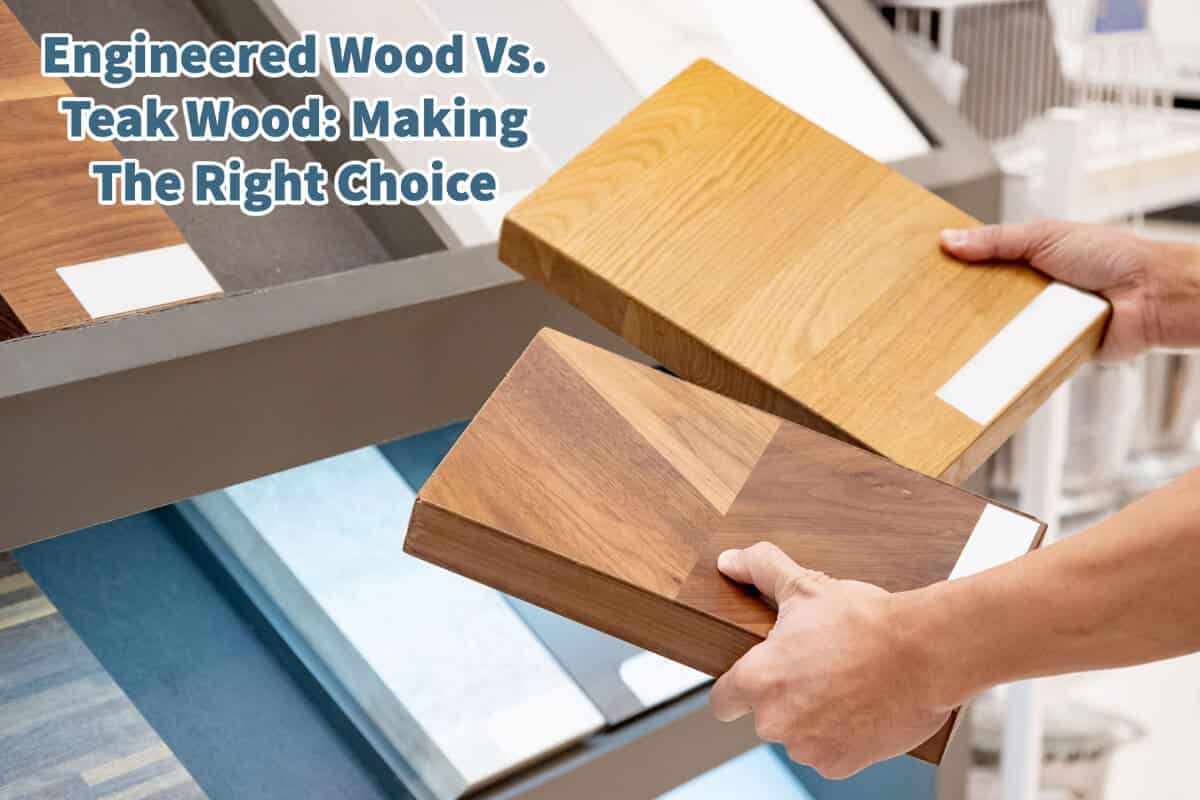Step into the world of woodworking, and you’ll encounter a fierce rivalry between two formidable contenders: engineered wood and teak wood.
These wooden powerhouses bring their own set of qualities to the table, promising exceptional results in different scenarios. Even if they have some similarities, they also have some differences, making each of these woods unique. Read on as we uncover engineered and teak wood’s hidden charms, unveiling their distinctive characteristics and revealing when each wood takes the crown.
Table of Contents
- Unveiling The Battle Of Woods: Engineered Wood Vs. Teak Wood
- Key Differences: Teak Wood Vs. Engineered Wood
- Related Content
Unveiling The Battle Of Woods: Engineered Wood Vs. Teak Wood
When selecting wood for various applications, two popular options often come to mind: engineered wood and teak wood. Both possess unique qualities and offer distinct advantages in different scenarios.
Read on as we will delve into engineered and teak wood characteristics, highlighting their differences and discussing when one may be a better choice.
Teak Wood: A Timeless Classic
Teak wood is renowned for its durability and natural beauty. Harvested from the Tectona grandis tree, primarily found in South and Southeast Asia, teak wood boasts a dense, close-grained structure. Its golden hue, smooth texture, and inherent oils and rubber content make it resistant to rotting, termites, and weather damage, even when left untreated.
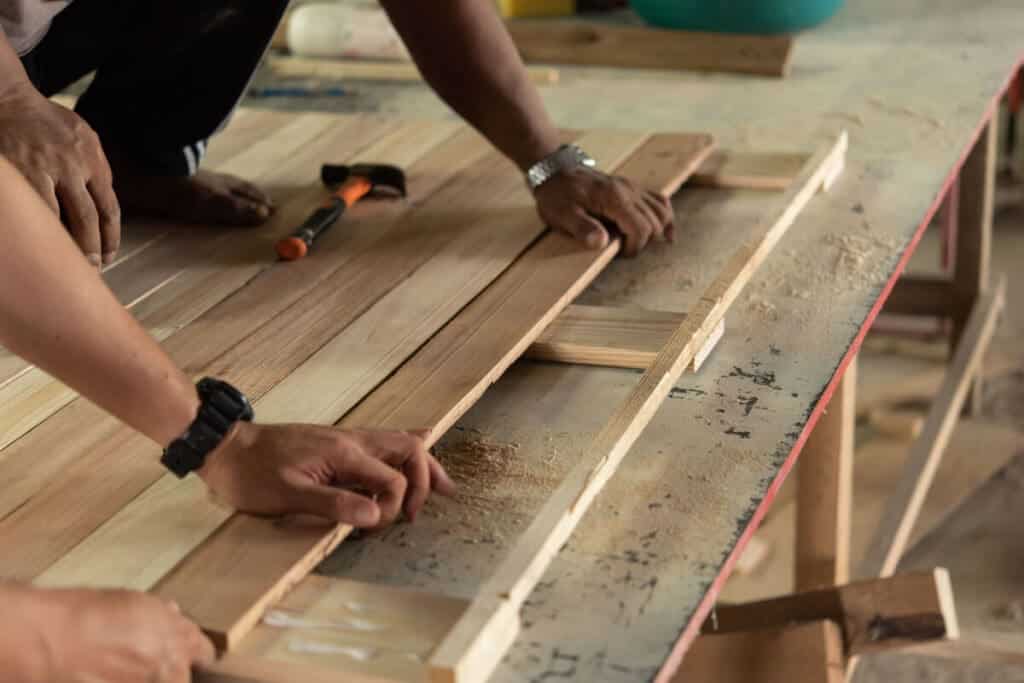
Advantages Of Teak Wood
Teak wood has many advantages. Here are some of its most important advantages.
Durability
Teak wood’s natural resistance to decay and pests makes it an ideal choice for outdoor furniture, decking, and boat construction.
Aesthetics
The rich, warm color and elegant grain patterns of teak wood enhance the visual appeal of furniture, flooring, and cabinetry.
Low Maintenance
Teak wood’s high oil content eliminates the need for regular staining or sealing, reducing long-term maintenance requirements.
Engineered Wood: Strength And Versatility
Engineered wood, on the other hand, is a category of wood products that offers enhanced strength and stability through a manufacturing process. It is created by binding wood fibers, scraps, or even sawdust with adhesives. Engineered wood is designed to mimic the appearance and properties of natural wood while providing superior performance in specific applications.
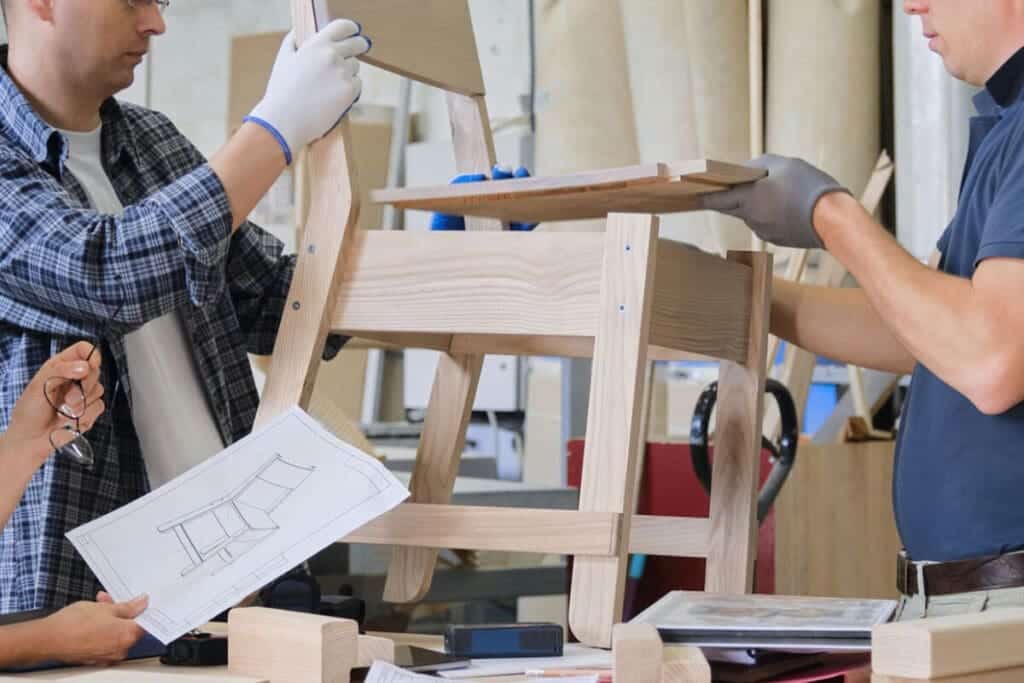
Advantages Of Engineered Wood
Like Teak wood, Engineered wood also has a lot of advantages and, in many applications, makes it an excellent wood to use.
Sustainability
Engineered wood often utilizes recycled materials, making it an eco-friendly choice. Additionally, it maximizes the use of available timber resources by incorporating smaller pieces of wood.
Stability
Engineered wood’s construction minimizes solid wood’s natural expansion and contraction, making it a reliable option for flooring, cabinetry, and structural components.
Cost-Effectiveness
Compared to teak wood, engineered wood products are often more affordable while delivering satisfactory performance.
Key Differences: Teak Wood Vs. Engineered Wood
Even though teak and engineered wood are both kinds of wood, some critical differences between the woods make them both unique. These qualities also help to determine which application is best for which kind of wood.
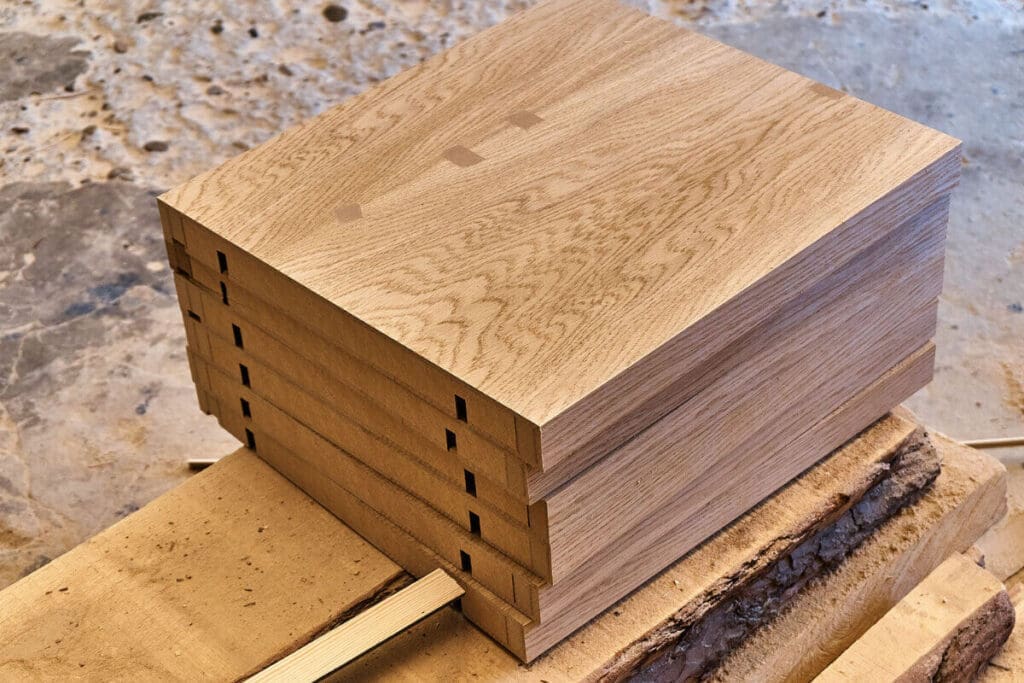
Natural Vs. Manufactured
Teak wood is a natural material harvested from mature trees, while engineered wood is a manufactured product that combines various wood components.
Strength And Durability
Teak wood is solid and resistant to weather and pests. Engineered wood can offer comparable strength and durability depending on the manufacturing process and materials used.
Aesthetics
Teak wood’s unique grain patterns and golden color give it a distinctive and timeless appeal, while engineered wood can replicate the look of various wood species or achieve contemporary designs.
Cost
Teak wood is generally more expensive due to its scarcity and exceptional properties, whereas engineered wood provides a cost-effective alternative without compromising quality.
Teak wood is an excellent choice when durability, natural beauty, and low maintenance are priorities, especially for outdoor applications. With its versatility, stability, and cost-effectiveness, engineered wood suits various projects, including interior applications like flooring and cabinetry.
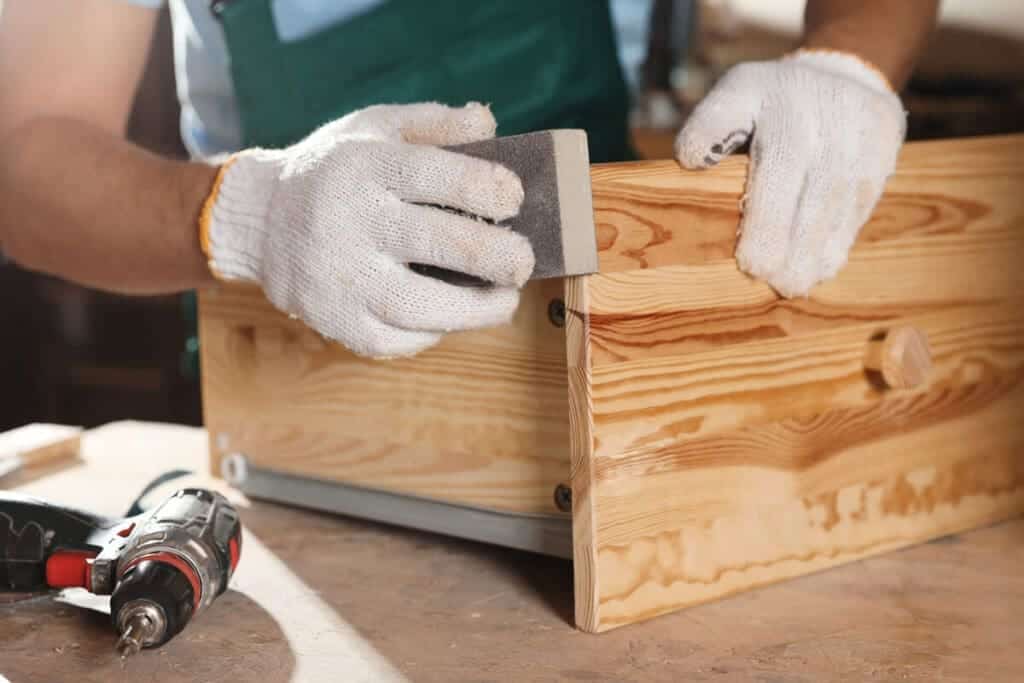
By understanding the characteristics and advantages of engineered wood and teak wood, you can make an informed decision based on the unique needs of your project. Whether you prioritize the natural charm of teak or the enhanced performance of engineered wood, both options offer their benefits, ensuring a successful outcome for your woodworking endeavors.
Choosing between engineered wood and teak wood depends on your requirements, budget, and desired aesthetic. Teak wood is an excellent choice when durability, natural beauty, and low maintenance are priorities, especially for outdoor applications. With its versatility, stability, and cost-effectiveness, engineered wood suits various projects, including interior applications like flooring and cabinetry.
By understanding the characteristics and advantages of engineered wood and teak wood, you can make an informed decision based on the unique needs of your project. Whether you prioritize the natural charm of teak or the enhanced performance of engineered wood, both options offer their benefits, ensuring a successful outcome for your woodworking endeavors.
At Mondoro, we would love to help you decide which material would be best for manufacturing your home decor and furniture product.
Find out more about how Mondoro can help you create, develop, and manufacture excellent home decor and home furniture products – including lacquer furniture. Don’t hesitate to contact me, Anita. Check out my email by clicking here or become a part of our community and join our newsletter by clicking here.
Mondoro gives out a FREE Lookbook to anyone interested. You can receive a copy of our latest Lookbook by clicking here.
Listen to our Podcast called Global Trade Gal. You can find it on all major podcast platforms. Try out listening to one of our podcasts by clicking here.
Subscribe to our Mondoro Company Limited YouTube Channel filled with great videos and information by clicking here.
Related Content
The Pros And Cons Of Lacquer Vs. Enamel Finishes
Lacquer and enamel are popular finishes used in various applications, from woodwork and furniture to cars and machinery. While both can provide a glossy finish, they differ in composition, durability, and application.
You can discover more by reading The Pros And Cons Of Lacquer Vs. Enamel Finishes by clicking here.
Guide To Acacia Wood Vs. Rubber Wood
Acacia is a hardwood that is found in Asia and throughout the world. The wood has a lot of color variations and a grain that works well on many types of furniture and other products. Rubber wood is also an excellent wood to use for furniture and other kinds of productions. It works well with many different types of finishes but does not have much of a grain pattern.
You can learn more by reading Guide To Acacia Wood Vs. Rubber Wood by clicking here.
Rattan Material: The Sustainable Choice For Furniture & Home Decor
Rattan is one material that is gaining popularity as it is considered a sustainable choice for furniture and home decor. Not only is rattan a sustainable choice for home decor and furniture, but it also has a lot of top qualities that make it an excellent choice. Read on as we list the 10 top qualities of using rattan material for home decor and furniture production.
You can learn more by reading our blog Rattan Material: The Sustainable Choice For Furniture & Home Decor by clicking here.

